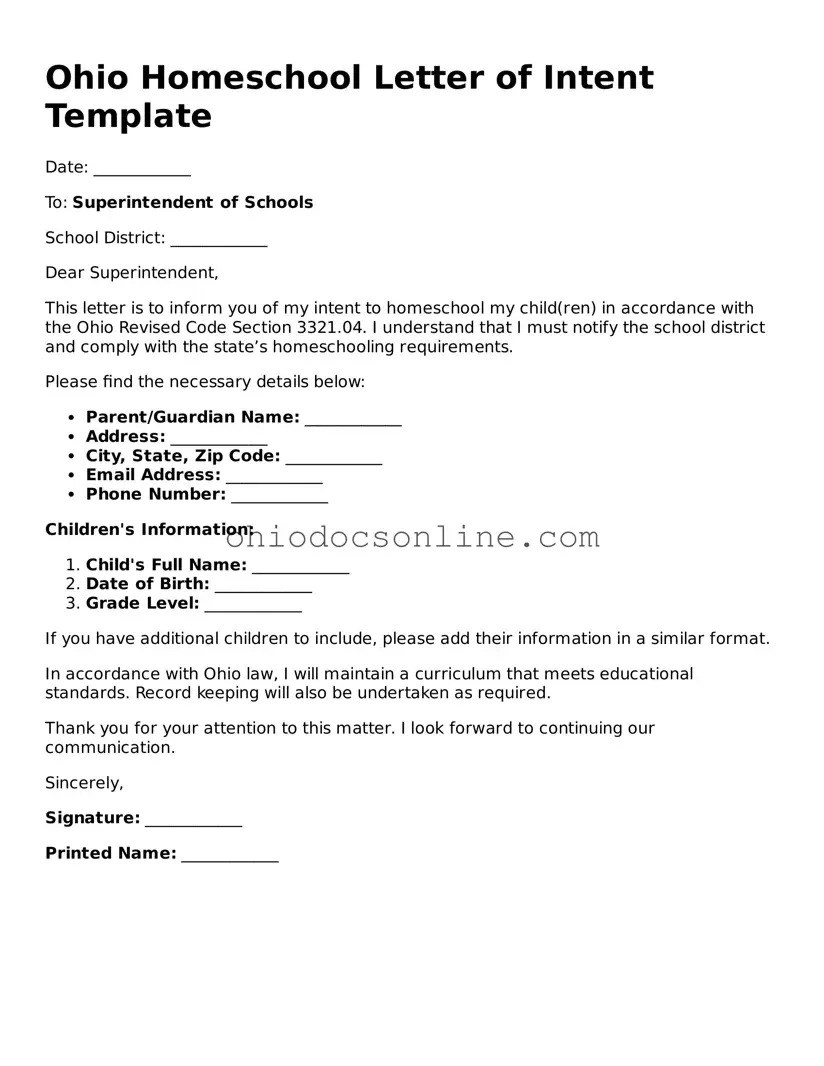Printable Homeschool Letter of Intent Template for Ohio
The Ohio Homeschool Letter of Intent is a crucial document that parents must submit to officially notify their school district of their intention to homeschool their children. This form outlines the educational plan and ensures compliance with state regulations. Completing this form is an essential step in providing your child with a tailored educational experience.
Open Editor
